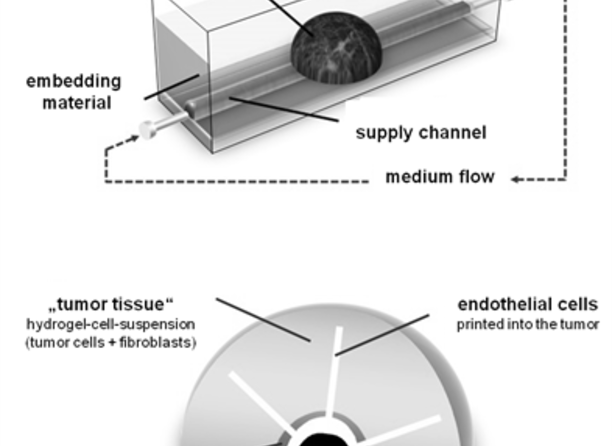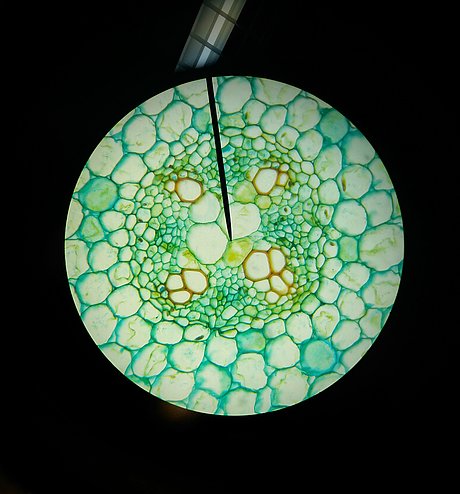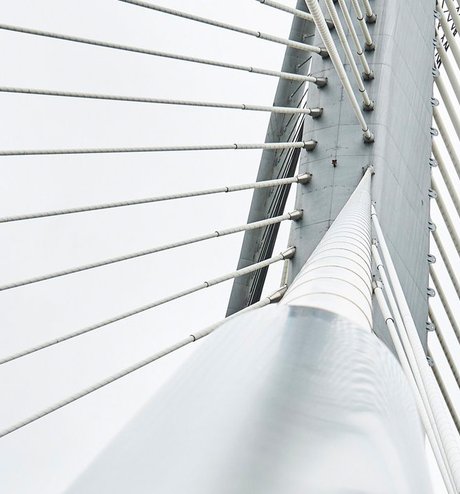3D-TAM (Tumour Angiogenesis Model) - A 3D-Printed Biomimetic Tumour Angiogenesis Model
Ref.-Nr. 3871
Keywords: Tumour Angiogenesis Model, Animal model
Despite major progress in finding alternative methods to animal use in drug discovery and development, laboratory animal testing is in many instances still inevitable. The law also requires animal testing to determine the safety and efficacy of new medicines before testing in humans. To reduce the number of experimental animals, several in-vitro-screening systems have been developed using different 3D-in-vitro-tissue-engineering approaches. However, even though significant progresses have been made, there is still no satisfying in-vitro-screening system available, which might represent a suitable alternative to animal studies.
3D-printed structures are produced to generate a 3D-biomimetic tumour-angio¬genesis Model. In a first step, a supply channel covered by an endothelial cell layer is generated using the 3D-bioprinting process and in a second step, tumour cells are embedded into a surrounding hydrogel-matrix cell-suspension.
Then, angiogenesis will start from the supply channel towards the tumour cells (which release angiogenic factors) leading to a vascularized and perfusable tumour.
This model can be used to analyse tumour groth, tumour angiogenesis and therapeutic effects on the 3D-printed cell model. This 3D-tumour model can be designed from pure biologic material (hydrogels and cells) without the need of synthetic development processes. No animal tissue is needed. Therefore, this 3D-printed Tumour Model represents an ideal in-vitro-prescreening system for testing pharmaceuticals and diagnostics and might be able to circumvent or at least reduce the number of animal tests in drug development.
Vorteile
- novel in-vitro-screening system for
- prescreening of diagnostics and pharmaceuticals
- testing drugs during tumour therapy
- analysis of tumour growth and tumour angiogenesis
- an alternative to animal testing
- highly precise process
- replicable
Kommerzielle Anwendung
The present invention allows for new strategies in the 3D-cell-printing of tumour models and an alternative to animal testing. On behalf of the University of Aachen, PROvendis is offering access for commercial use in terms of a license.
Aktueller Stand
In case of interest we will be pleased to inform you about the patent status.
Technologie-Reifegrad
1
2
3
4
5
6
7
8
9
Versuchsaufbau in Einsatzumgebung
Relevante Veröffentlichungen
Schöneberg J, Theek B, De Lorenzi F, Blaeser A, Rommel D, Kuehne AJC, Kießling F, Fischer H; (2018). Engineering biofunctional in vitro vessel models using a multilayer bioprinting technique. Sci Rep 8:10430. DOI: 10.1038/s41598-018-28715-0
—
Eine Erfindung der Uniklinikum Aachen.



